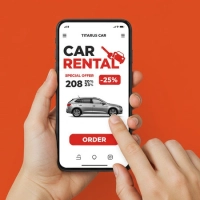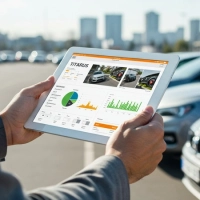
What Are HGS and OGS Vehicle Classes?
The class of the vehicle is important when purchasing OGS (Automatic Toll Payment) or HGS (Fast Toll Payment) stickers for use on toll roads, such as bridges and highways. Vehicles are categorized into various classes:
1. Cars
2. Minibuses
3. Buses
4. Trucks and Trailers
It is essential to remember that the payment amount is determined based on the vehicle's class, wheelbase, and axle configuration. The main difference between HGS and OGS on toll roads and bridges is that one is categorized into six classes, while the other is categorized into five. Knowing your vehicle class will help you choose the appropriate payment method. So, what are the HGS and OGS vehicle classes? Let's take a closer look.
What is OGS?
OGS stands for Automatic Pass System. In this system, sensors at toll booths on bridges and highways automatically collect payment. These sensors read the OGS device, which is usually affixed to the vehicle's windshield, and automatically charge the account holder. The fee collected at the toll booths is determined according to the vehicle's class.
What is HGS?
The HGS system was introduced after the manual card system was discontinued, initially intended to replace OGS. However, it has not fully replaced OGS, as the system has not developed in this direction. Since 2012, the HGS system has been in use, with pricing based on six vehicle classes. However, HGS operates more slowly compared to OGS, which has led to various problems. HGS toll booths are narrower and the readers are less sensitive, requiring vehicles to slow down, which causes congestion.
HGS and OGS Vehicle Classes
HGS and OGS systems use different criteria for pricing. As mentioned earlier, HGS uses six vehicle classes for pricing, while OGS uses five. It is crucial to specify your vehicle class correctly when purchasing either payment system. Vehicles that are not classified correctly may be blacklisted and face various issues. Pricing is generally calculated based on the size, function, or axle-wheelbase distance of the vehicle. Therefore, knowing the correct HGS and OGS vehicle classes is essential:
- 1st Class Vehicle: Vehicles with a wheelbase of less than 3.20 meters, such as cars.
- 2nd Class Vehicle: Two-axle vehicles with a wheelbase of 3.20 meters or more, such as minibuses.
- 3rd Class Vehicle: Three-axle passenger buses.
- 4th Class Vehicle: Trucks with 4 or 5 axles.
- 5th Class Vehicle: Trucks and trailers with more than 6 axles.
- 6th Class Vehicle (HGS only): Motorcycles are considered 6th class in HGS but 1st class in OGS, paying half the rate of cars on toll roads and highways.
HGS and OGS vehicle classes may differ in their pricing classifications, as seen with motorcycles.
While it is straightforward to determine the class of a personal vehicle and manage the corresponding payment system, managing the HGS or OGS applications for an entire rental fleet, including expenditures and current balances, can be challenging.
Titarus offers modules to easily track the HGS and OGS processes for the vehicles in your fleet.























